Hand Knotted
Hand-knotting is perhaps one of the most oldest form and intricate weaving technique carried out by very skilled artisans. For thousand of years, hand knotted carpets have meant to be the pinnacle of comfort, luxury, beauty & practicality in thousands of homes worldwide. This technique have flourished as an oriental art, since it was introduced by the Mughals in India. Initiated by the great Mughal Emperor Akbar in 16th century, he invited skilled artisans from Persia to come to India and permanently settle down. He ordered them to weave the similar eccentric forms of carpets, the way Persian courts flaunted, and that is why the industry has a great inclination towards the Persian style in its designs, layout & colors.
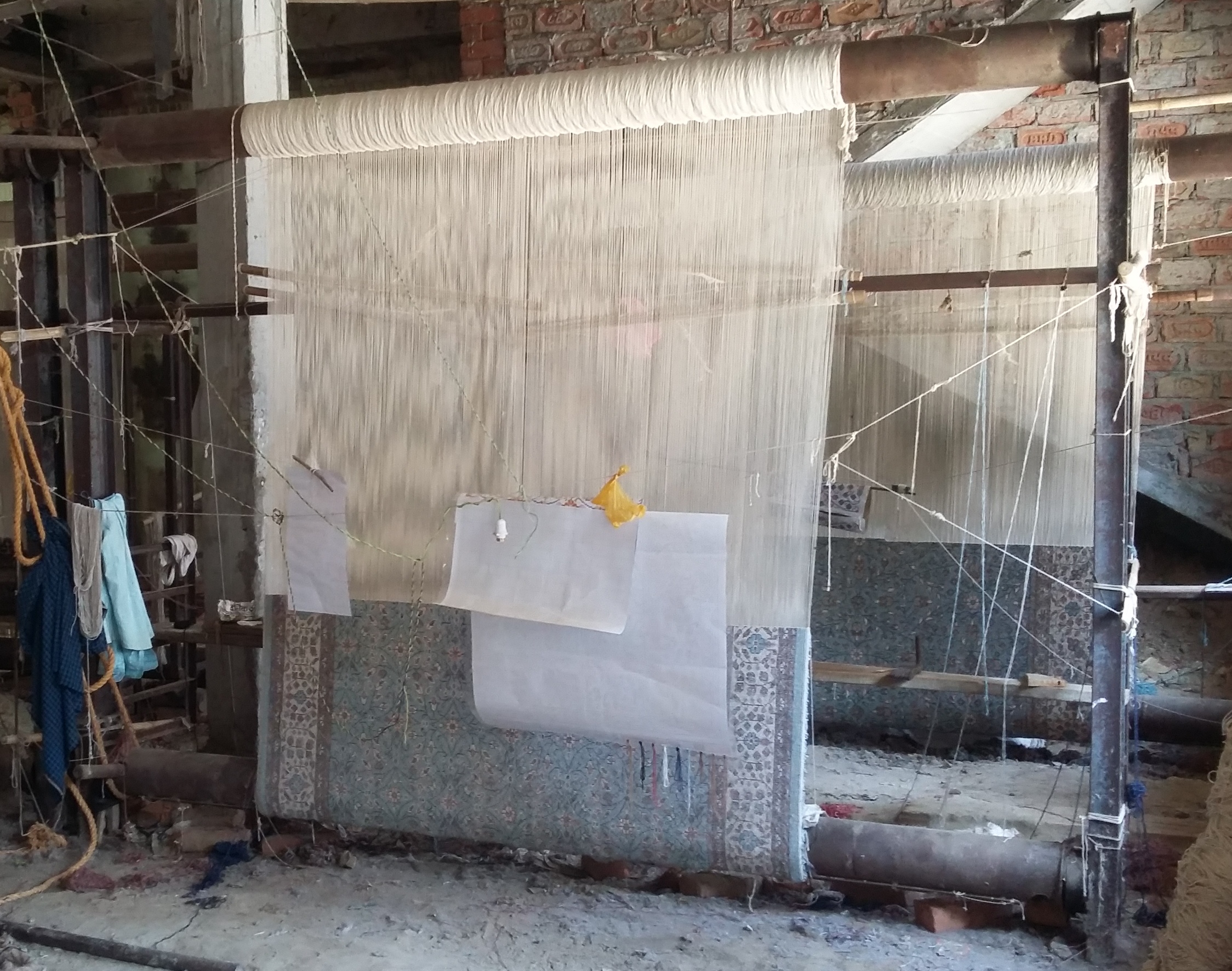
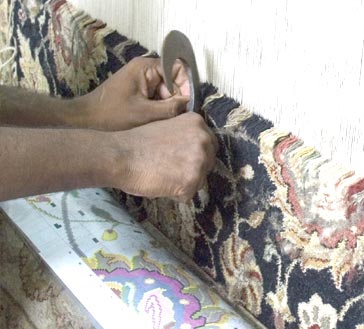
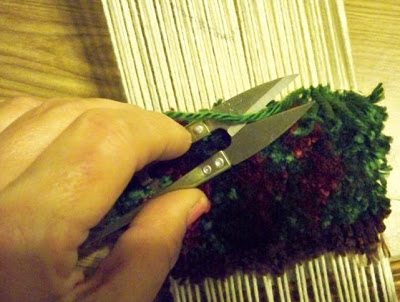
Before the knotting starts, a specialist artist draws the full-scale design on a graph paper where each square represents a knot. Once the design is drafted, it is placed on a frame called the loom. After the loom is set up, the warp (or vertical) threads are tied on the loom, and these are mostly of cotton so as to have a firm flat base. The weaver secures the warps by arranging horizontal rows called as weft. The weft is of cotton or wool or silk. The warp threads that eventually become the fringe of the rug. The weft runs horizontally and intertwines with the warp to create the base of the rug. The weft also creates the selvedges (or edges) of the rug, which hold the rug together.
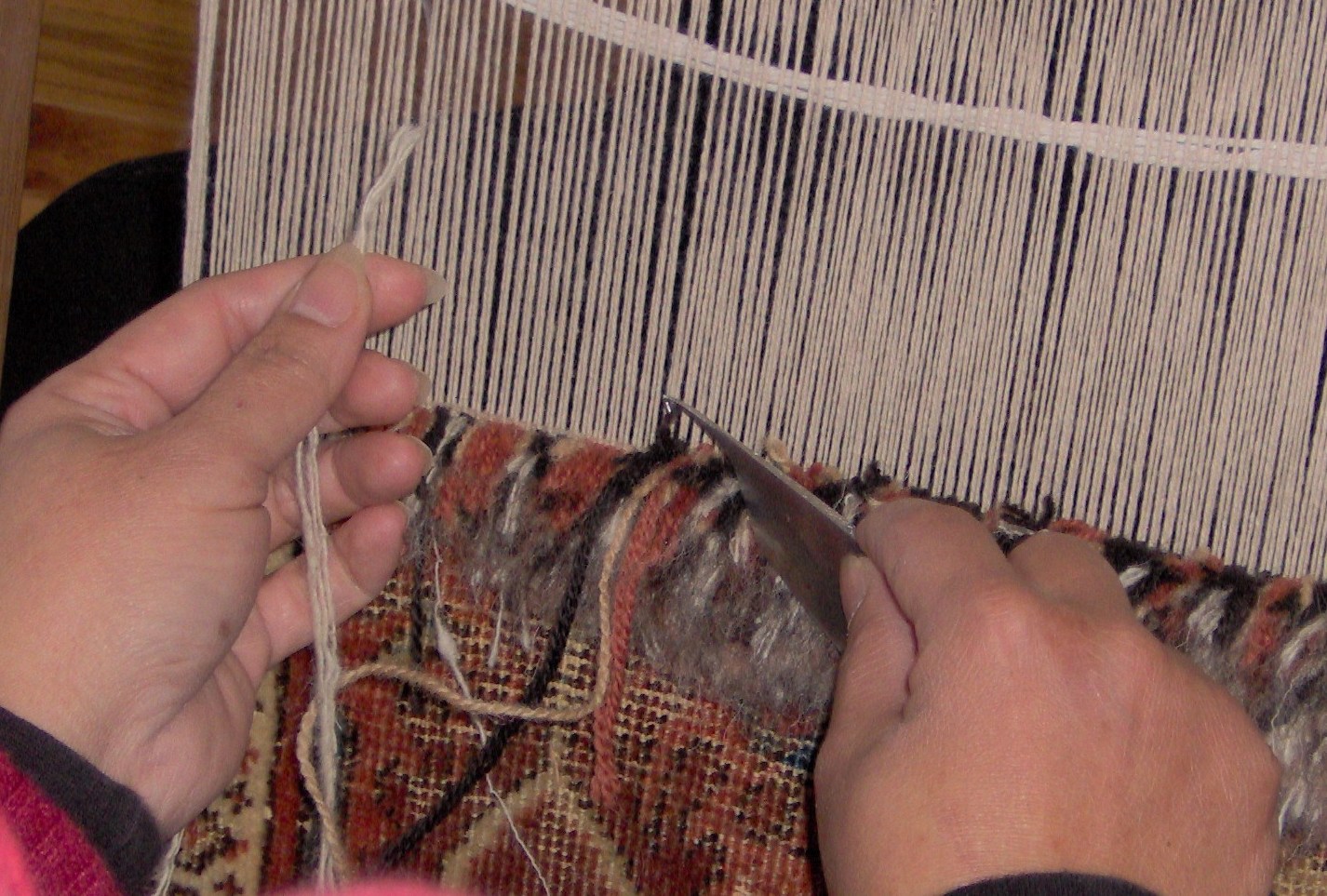

Once the complete carpet has been knotted, the finished piece is taken off the loom and the designs & patterns are trimmed by scissors, and then the pattern begins to emerge as the pile becomes shorter and more even. After this it is sent for washing, where it is soaked in water. The water, along with any surplus dye and dirt, is then squeezed out several times using special wooden scrapers. Once the carpets have been washed, they are dried in the sun for upto four or five days, to stabilize the colors. During this process, the colors fade slightly, giving the carpet its beautiful hue. The dried carpets are given final touches by re-trimming and stretching, wherever necessary. Finally, a thorough checking is done where any small holes that may have appeared during washing or cutting are repaired, and the carpet is now ready for use.
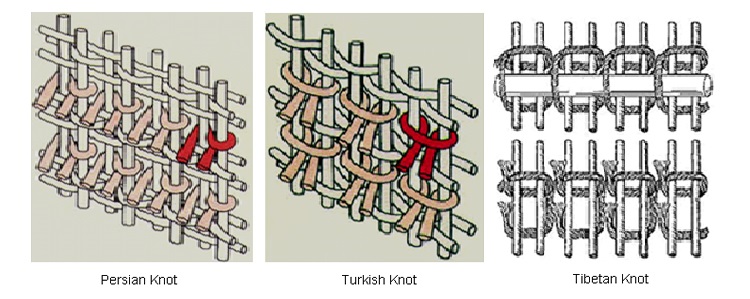
Knot Types: There are generally four different types of knots. The Persian method is more traditional where each knot individually cut by hand to create the pile. The Indo-Nepal technique involves a rod that allows for an entire row of knots to be cut.
1) 'Giordes' knot or the symmetrical Turkish knot: To tie a symmetric knot, the yarn is passed between two adjacent warps, brought back under one, wrapped around both forming a collar, then pulled through the center so that both ends emerge between the warps. In this type of knotting, more bold, rectilinear designs can be made.
2) 'Senneh' knot or the asymmetrical Persian knot: The asymmetric knot is tied by wrapping the yarn around only one warp, then the thread is passed behind the adjacent warp so that it divides the two ends of the yarn. The Persian knot may open on the left or the right. The asymmetric knot allows to produce more fluent and often curvilinear designs.
3) 'Jufti' knot: It is tied around four warps instead of two. A serviceable carpet can be made with jufti knots, and jufti knots are sometimes used in large single-color areas of a rug, for example in the field, to save on material. However, as carpets woven wholly or partly with the jufti knot need only half the amount of pile yarn compared to traditionally woven carpets, their pile is less resistant to wear, and these rugs do not last as long as the Persian or Turkish knot carpets.
4) 'Tibetan' knot: As the name suggests, this type of knot is generally used in carpets made in Tibet. A temporary rod which establishes through the length of pile is put in front of the warp. A continuous yarn is wrapped around two warps and then once around the rod. After a row of loops is finished, the row is cut to construct the knots.
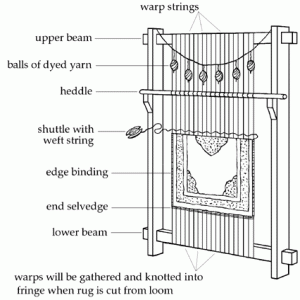 Owing to the technique where each knot is individually tied by hand, hand-knotting is a very slow process, but it allows for the creation of highly detailed patterns. If it’s a hand-knotted rug, it means that a skilled weaver individually tied every knot, thus creating a one-of-a-kind handmade rug. That is what makes hand-knotted rugs so very special, and that is what makes them so much more expensive than all other types of area rugs. Depending on how many knots are present in each square inch (50 - 160 knots/square inch is typical, 400/ square inch is remarkable), and sometimes it can take more than a year for one weaver to complete a 9' x 12' rug.
Owing to the technique where each knot is individually tied by hand, hand-knotting is a very slow process, but it allows for the creation of highly detailed patterns. If it’s a hand-knotted rug, it means that a skilled weaver individually tied every knot, thus creating a one-of-a-kind handmade rug. That is what makes hand-knotted rugs so very special, and that is what makes them so much more expensive than all other types of area rugs. Depending on how many knots are present in each square inch (50 - 160 knots/square inch is typical, 400/ square inch is remarkable), and sometimes it can take more than a year for one weaver to complete a 9' x 12' rug.Wool, silk and cotton are the three primary materials that are used to make a hand-knotted rug. Wool is the most used material. Cotton is sometimes used in the foundation, but is not seen in the pile. The combination of these materials makes for an extremely strong rug. Hand-knotted rugs can withstand high traffic and last for generations.
